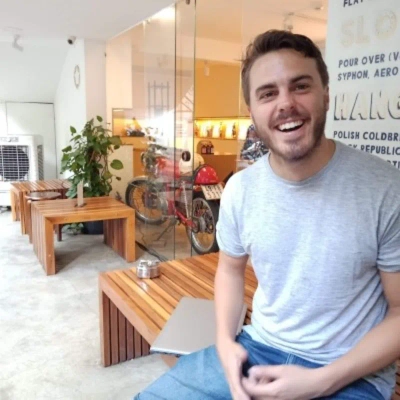Creating Universally Accessible Social Media Content: Expert Tips and Tools
In the ever-evolving world of social media, creating content that is accessible to all users is crucial. This article presents expert-backed strategies for developing universally accessible social media content. From design principles to AI-assisted tools, discover practical tips to ensure your content reaches and engages the widest possible audience.
- Use The Accessible Design Grid
- Stick to Native Platform Formatting
- Create Platform-Specific Visual Content
- Implement an Accessibility Checker
- Include Alt Text for Every Image
- Conduct the Silent Read Test
- Employ Descriptive Alt Text for Culture
- Establish Clear Lens Strategy for Accountability
- Utilize AI-Assisted Content Repurposing System
- Develop Simplified Educational Content
- Produce 9:16 Video with Subtitles
- Design with High-Contrast Color Combinations
- Add Alt Text and Captions
- Diversify Content Across Multiple Formats
Use The Accessible Design Grid
We anchor our process in a framework we call "The Accessible Design Grid."
Accessibility isn't patched on after the fact; it's embedded in the draft itself. Every post is stress-tested through three filters before it goes live.
The grid is built around three columns. The first is "Clarity." Here we check if the main idea is stripped of jargon and straightforward enough to grasp in just a sentence or two. Then comes "Sensory Balance," where we check if the post would still make sense through text or captions alone if the sound is muted or the image doesn't load. Finally, "Structural Integrity" is about making sure hashtags are written in CamelCase for screen readers and that links are phrased clearly enough to stand on their own.
Passing content through the grid makes accessibility a creative mandate rather than a retrofit.
It ensures our work communicates clearly in any format. Content can be read on a screen, spoken aloud by a reader, or viewed in full multimedia. With these filters in place, accessibility becomes part of the content's architecture. This gives every post the consistency and reach needed to engage wider audiences with confidence.

Stick to Native Platform Formatting
At our agency, we only use text formatting that the platform natively allows.
For example, Instagram doesn't support bold or italics, so we don't add them through a third-party app. These tools get around the formatting by using special characters that, although they make the text distinctive for visually able users, often aren't read properly by screen readers. This makes content inaccessible for some visually impaired users.
To be fully inclusive, we always recommend that you only write in the way the platforms allow.

Create Platform-Specific Visual Content
One technique I consistently use to make social media content accessible to diverse audiences is repurposing long-form content into platform-native graphics with strong keyword descriptions. For Pinterest specifically, I create visually appealing pins with descriptive text and strategic keywords that link back to detailed blog posts. This approach has proven effective in driving sustained traffic to my businesses for months after publishing and reaches audiences who prefer visual content discovery. The key is understanding that accessibility isn't just about format but also about discoverability through strategic keyword placement.

Implement an Accessibility Checker
In the drive to create content for social platforms, the keyword is ACCESSIBILITY. This means working to ensure that all published content is understandable by everyone. We use an ACCESSIBILITY CHECKER for social media prior to publication. This tool evaluates:
- Color contrast
- Character size and font quality
- The pace of subtitles on video
- Line spacing, which affects readers with disabilities
The checker can suggest changes to improve accessibility shortly after something first goes live.
We once worked with a client in the home services niche whose videos showcased dramatic before-and-after transformations. The checker improved all the typographical and contrast issues by either darkening backgrounds, increasing margins, or adding helpful captions. As a result, their accessibility score rose by 28%, and they saw an increase of up to 19% in their engagement rate—because now many more people could understand their content.

Include Alt Text for Every Image
We always include alt text for every image and graphic that we add to our content. The process of moving quickly can make it easy to overlook this step, but screen reader users need this information to understand your post. Without it, they may move on to the next one. A client once uploaded 50 visual carousel slides without any alt tags, which made them completely inaccessible to screen reader users. Following this discovery, the team implemented alt text as a mandatory step in our content creation workflow.
Conduct the Silent Read Test
Hi there,
I'm Lachlan Brown, co-founder of The Considered Man, a platform on men's mental resilience and mindful living. I've built platforms that reach millions of readers, and I've learned that accessibility isn't just determined by fonts or captions — it's how people feel when they land on your content.
One unusual technique I use is what I call the "silent read test." Before posting, I strip the content of all images, emojis, and formatting, then read it out loud slowly, as if I were explaining it to someone with no context — like a friend overhearing me in a cafe. If the message still flows, makes sense, and has emotional clarity, then I know it's accessible to a wide range of people, regardless of background, education, or even whether they're using assistive technology.
I know this sounds old-fashioned, but it truly works. By doing this, I've caught jargon that felt "normal" to me but would alienate younger audiences, and I've restructured posts so the key point comes first — critical for readers who skim. It's accessibility not just in a technical sense, but in a human sense.
To me, accessibility is really about reducing friction. If a post is clear and inviting when read aloud in silence, then it's far more likely to land well with people who don't consume social media in the "default" way.
Thanks so much for considering my perspective! I'm happy to share more if needed!
Cheers,
Lachlan Brown
Co-founder, https://theconsideredman.org/

Employ Descriptive Alt Text for Culture
At City Unscripted, we see making social media accessible as more than just posting on Instagram and Facebook. We recognize that visitors assimilate cultural information in different ways. For example, I employ descriptive alt text for cultural images. When sharing images of our Florence pottery expert, the alt text details the movements of hands on clay and sounds from the workshop, ensuring that fans with visual impairments understand the cultural reference.
This approach goes beyond visual accommodations; it's about accommodating various cultural ways people learn and use technology. I work on three storytelling planes:
1. A short caption for fast consumption
2. An in-depth link-out post for teaching people
3. Audio descriptions inside videos to connect with every user
We should think about accessibility in terms of cultural inclusivity, not burdening people with rules. Observers of all backgrounds are well-served by in-depth cultural context that improves their understanding and adds value to traditions and crafts.
Our users have varying skill levels and access to different levels of technology, but they all desire quality cultural experiences and a sense of community.

Establish Clear Lens Strategy for Accountability
Making your content accessible doesn't just mean chasing every major trend—it's more about establishing systems of ACCOUNTABILITY. In my line of work, we have developed a process we call the Clear Lens Strategy, which is a series of reviews designed to eliminate internal bias and identify elements that are likely to alienate or confuse audiences. Rather than limiting the review process to internal staff members who may all think alike, we bring in more diverse talent from various fields. This adds an entirely unbiased perspective to consider language clarity, contrast ratios in graphics, and other accessibility factors.
We once had a client who published captions that looked great in design but were unreadable on mobile screens for people with visual impairments. After a Clear Lens review by an external reviewer who had only basic HTML knowledge, we redesigned the captions into high-contrast text with distinct hierarchies. Within two weeks, engagement rates for those posts increased by 27%. This improvement wasn't due to changes in content but because more people could read and participate in it.

Utilize AI-Assisted Content Repurposing System
I'll be brutally honest here - I hate social media. However, it has become a necessary evil because Google takes social signals seriously, and now platforms are becoming direct SEO assets.
My One Specific Technique: The "AI-Assisted Content Repurposing System"
Here's how we make social content accessible to different audiences without overwhelming our team:
The Process:
1. We create one high-quality, human-written pillar piece of content (like our SEO guides).
2. We use our BSM Copilot AI tool to "slice and dice" that content into multiple formats.
3. The AI generates social posts tailored to different platforms and audiences.
Why This Works for Accessibility:
Platform-Specific Adaptation:
- LinkedIn: Professional, longer-form posts with industry insights
- Facebook: More conversational, community-focused messaging
- Instagram: Visual-first with accessible captions and alt text
- Twitter: Bite-sized, actionable tips
Audience-Level Customization:
The AI can take the same core content and create versions for:
- Beginners: Simplified language, basic concepts
- Intermediate users: More tactical details
- Advanced practitioners: Technical depth
Real Example:
When we published our Ultimate Local SEO Guide, our AI system automatically generated:
- 15+ LinkedIn posts explaining different concepts
- Facebook posts with local business examples
- Twitter threads breaking down complex strategies
- Even Reddit-friendly versions for different communities
The Key:
We use AI for the repurposing and distribution, but the source content is always human-created by experts. This ensures quality while making it scalable.
This connects to our Micro SEO: Human-driven, AI-assisted philosophy - we let AI handle the tedious work of reformatting content for different audiences, while humans maintain the strategic thinking and quality control.
Tool Recommendation:
We built our own system, but platforms like SE Ranking (which recently acquired Planable for social media management) are moving toward this unified approach of treating social content as SEO assets.

Develop Simplified Educational Content
At OSSIO, I discovered that creating simplified educational content is key to ensuring social media accessibility across diverse audiences. We specifically developed concise articles and videos that break down complex medical concepts into straightforward, easy-to-understand information. This approach not only makes content more accessible to people with varying levels of subject knowledge but also establishes credibility as we focus on teaching rather than promotion. The result was more inclusive content that resonated with broader audiences while fostering meaningful engagement.

Produce 9:16 Video with Subtitles
The only format that truly works across all major social platforms is 9:16 video. By producing every piece of content in this format and always adding subtitles, we ensure it's accessible and ready to perform on TikTok, Instagram Reels, YouTube Shorts, Facebook, and Snapchat. For our clients, this approach has consistently multiplied reach and delivered millions of organic views without extra production costs.
Design with High-Contrast Color Combinations
We design our social media visuals with accessibility at the center of every decision. We focus on high-contrast color combinations to make text stand out clearly for people with visual impairments or color blindness. Strong contrast allows content to be read easily and without strain. It also creates a sense of balance and simplicity in our designs, which aligns naturally with our brand. We see accessibility as a guiding principle that shapes our creative approach rather than a small addition.
This focus on accessibility has changed the way we think about digital creativity. It pushes us to create cleaner and more effective visuals that reach everyone. High contrast ensures that all audiences can engage with our content and understand our message. These small adjustments have a big impact, making our platforms more inclusive and welcoming. We believe that thoughtful design should make every person feel included in our story.

Add Alt Text and Captions
To ensure my social media content is accessible to a wide range of audiences, I always use alt text for images. This allows screen readers to describe visuals to users who are visually impaired. I also make sure videos have accurate captions so people who are deaf or hard of hearing can follow along. For example, I often use Kapwing to quickly generate and edit captions for videos before posting, which improves accessibility without slowing down my workflow.

Diversify Content Across Multiple Formats
We keep it simple and show up everywhere: text, audio, video, long-form, and short-form content. Some people want to read, others want to scroll or listen while driving. If you're only posting one way, you're missing most of your audience.



